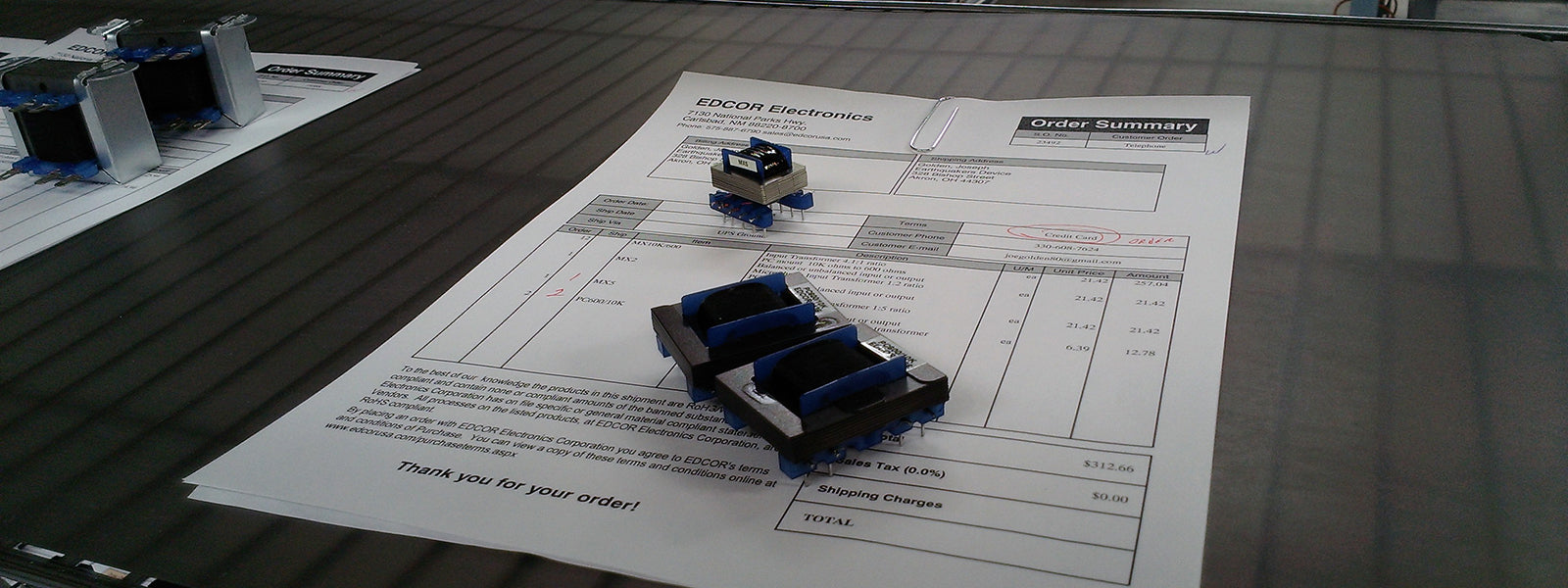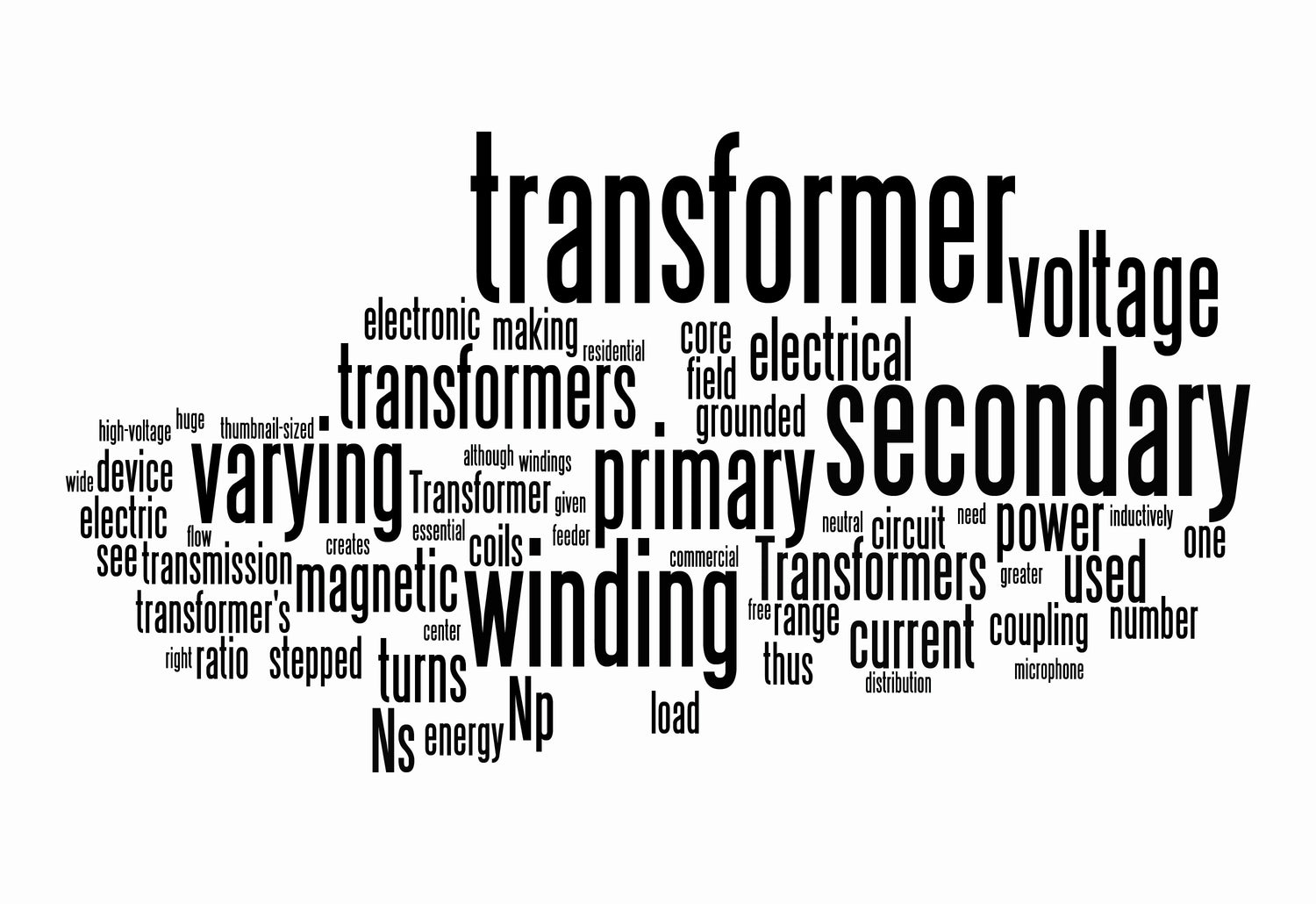EDCOR initially began as an audio equipment manufacturer. Over time EDCOR’s product line grew to include mixers, pre-amps, amplifiers, headphone, and much more. An increasing difficulty in obtaining quality audio and power transformers, initiated research that led to the discovery of a small company called Delta Magnetics. Delta Magnetics was founded by a former transformer design engineer from Altec/Peerless named Vincent Piraino. Delta Magnetics was hired to design and build transformers for EDCOR. Eventually, Delta Magnetics was purchased by EDCOR, and Vince was hired full-time to run the division.
Over the years, the demand for EDCOR transformers grew beyond that of the other product lines. As a result, transformer manufacturing became the primary focus.
EDCOR has been building transformers for over 40 years. Over that time, extensive knowledge, data, and techniques in the manufacturing of transformers has been collected. Over this time several people have been asking about transformer designs. I have decided to offer this multi-part blog series for the basic understanding of transformer design. There are many books that go into depth regarding the formulas, constant numbers, material selection needed for transformer design. Therefore, I will address the basics of design process and manufacturing. This series is just a starting point and assume some knowledge of math and electronics.
Part 1: The Basics
WHAT IS A TRANSFORMER?
1. Theory
Theoretically, a transformer’s purpose is to transform one AC voltage to another AC voltage proportional to the turn ratio with the current inversely proportional. Basically, as the voltage goes up, the current goes down and vice versa. An ideal transformer has no losses when performing this transformation, however, in the real world, there are always losses. A good design is used to mitigate the losses as much as possible.
2. Parts of a transformer
A transformer is mostly a coil built around a core. There are many different types of transformer configurations, such as a Toroidal, Three Phase, Berry, Autotransformer, Shell, etc. Each configuration/type has its own purpose and reason. The same goes for the types of wire materials and core materials. As EDCOR focusses on producing transformers for the pro sound and classics audio fields, we will be primarily addressing transformers that pertain to audio products. This includes single phase power transformers, chokes, isolation transformers, autotransformers, and the type of materials used for audio transformer design.
The components of a transformer are as follows:
- Bobbin/Tube – Some use a square or rectangle tube on which to wind the transformer coil on. Over the years, tubes have been replaced by molded plastic bobbins, the current industry standard. With either type, the material needs to be rated for heat, flammability, and electrical insolation. There are a variety of materials used in the manufacturing of bobbins based on the intended application. A benefit of a molded plastic bobbin is that it isolates the coil wire from the core material more efficiently, making winding the coil and designing the transformer easier. EDCOR uses glass filled nylon 6/6 modeled plastic bobbins. These have a good flammability rating, insolation, and are an industry standard material for electronics.
- Coil – Coils are wound with magnet wire, a thinly coated wire that can be made of aluminum, silver, or copper. Copper magnet wire is the most commonly used due to its excellent conductive and current handling qualities. EDCOR only uses unrecycled, “Virgin”, copper magnet wire as it has the least impurities.
- Tape/Wrapper – Electrical tape or kraft paper is used to insulate the windings from each other. It is also used for a final wrap to cover and protect the coil. There are many different types of tape and kraft paper to choose from. The type to be used is determined by the voltage isolation and the support needed during winding of the transformer. You will need to select the best material for your specific application.
- Core – The core is the metal material that the coil is wound around. In some transformers like a toroid, the wire is directly wound around it. Others may have a molded or stacked core. These cores are inserted after the coil is wound. There are many different types of core materials and grades. EDCOR uses mainly “E I” M6 29-gauge grain orientated silicon steel. Some of our smaller transformers may use 80% Nickel. Choosing the right core material depends on the specifications and the application of the transformer being designed.
- Termination – The termination of a transformer is the connection points used to connect the coil’s wound magnet wire to the electronic circuit. There are a lot options, including wires, terminals, and custom connectors. The terminations EDCOR use are lead/hookup wire, PCB pins, or terminals depending on the specifications and type of bobbin used.
- Hardware – This is how the transformer is mounted. Over the years there have been many ways to mount a transformer. This all depends on the specification and application of the transformer. Some transformers, like those mounted to printed circuit boards, do not have any hardware. Others may have covers, brackets, frames, or just screws for mounting.

3. Transformer Schematic
Drawing a schematic of a transformer is necessary in the design process. Schematics give you a reference for the voltages, currents, number of primaries, number of secondaries, etc. It also helps with the visualization of the transformer and how you will wind it.

When creating the schematic for a transformer, indicate the start of each winding with a dot. These dots are used to help maintain the polarity and phase of the transformers. They are also called “start dots” because when you wind the transformer, you want to start at this termination.




3 comments
John Anthony
Thanks for these posts, great information!
Thanks for these posts, great information!
Trevor
Great write up, I’m looking forward to reading the rest
Great write up, I’m looking forward to reading the rest
Pete B.
I appreciate that Edcor wants to send out these educational newsletters to interested people. You are a great company!
I appreciate that Edcor wants to send out these educational newsletters to interested people. You are a great company!